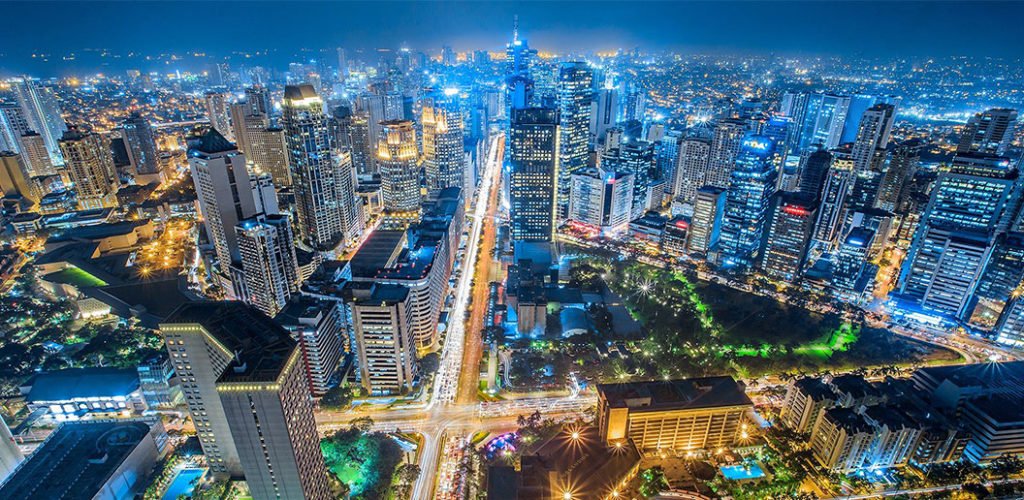There are cities in the world that are known for having a mix of everything. From tropical climate, a hectic afternoon rush hour, beautiful architecture, lovable people and an incredible history, to fantastic sights, great beaches, amazing food and an outstanding biodiversity. One of such cities is not too far away from the Land of Smiles and is the capital of an iconic South East Asian nation, one of the most populous in the world dissected into more than seven thousand different islands. This month, HOT Magazine goes back to Manila to again explore the beauty of its culture, people and incredibly rich historical legacy.
Manila is one of the most iconic cities in the world. Among its most well-established tourist attractions is Intramuros. Intramuros has its origins in the day of the Spanish empire’s rule of the Philippines back in the 16th century, when an expedition of explorers set off from the South American bastion of New Spain, now modern-day Mexico, and made its way into Manila through battle and an eventual victory over native inhabitants of the 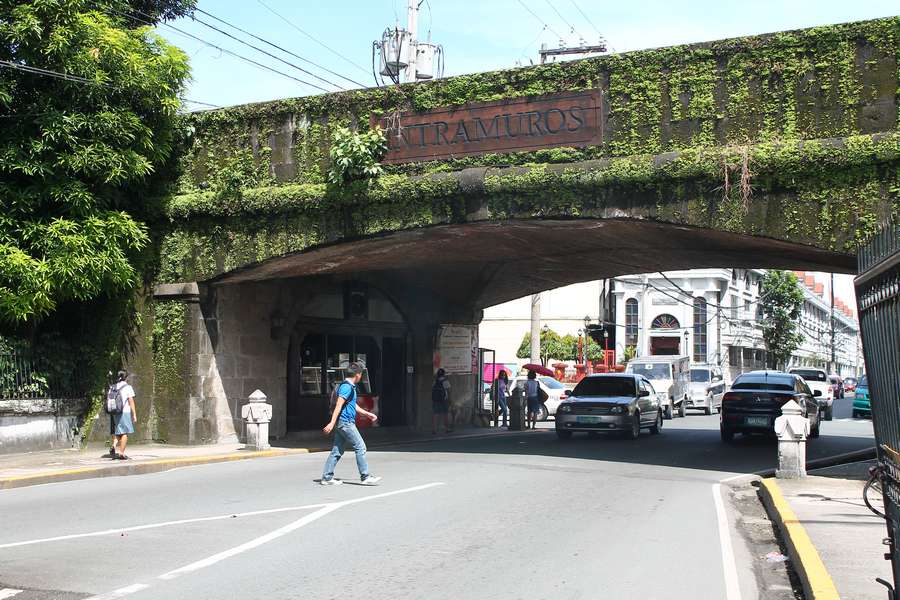 island.
island.
On doing that, the Spanish declared the area to be the new capital of the country but would often suffer setbacks from invading forces such as Chinese pirates or simply from environmental disasters. This drove colonialists to begin the construction of a wall around the city in order to stay protected. They would call this Intramuros, which in Spanish could translate to “within the walls.” It was built by Philippine and Chinese workers and given that it was not planned in accordance to any specific architectonic guidelines, it took centuries to complete, the last of its works finishing in the late 19th century.
The wall was built irregularly and thus does not have a uniform height throughout its entire enclosure, with some stretches rising to about two and a half metres and others dwarfing that with an elevation of almost seven metres in height. The wall covers about 64 hectares of land and a moat surrounds it.
Inside the enclosure, one finds an array of different architectural beauties. One of them are the gates of Intramuros, which are former entrances to the city comprising eight gates. Three of them – Puerta de Banderas, Puerta de Postigo, Puerta de Santa Lucia – face West. Another three – Puerta de Almacenes, Puerta de Sando Domingo or Puerta de Aduana and Puerta de Isabel II – face north. The one and only facing south is the Puerta Real and the same applies for the solitary Puerta del Prian, which faces east.
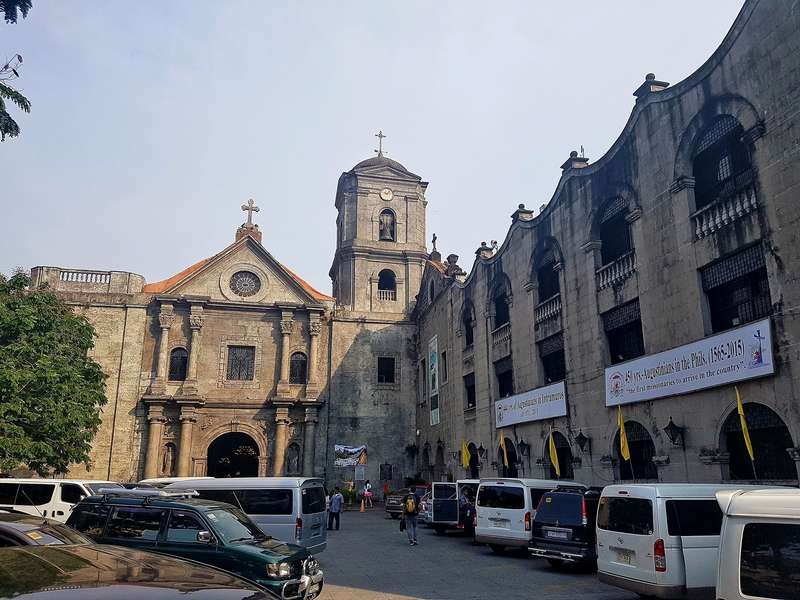 One of the most recognisable icons inside Intramuros is the San Agustin Church, which is currently a museum. It is a roman Catholic church built in the 18th century by architect Juan Macías and its current form happens to be the third construction of this Augustinian church on the same plot of land. It is symbolic for being the first ever religious structure to have been built by Spanish colonisers on Luzon island and it withstood eight highly intense earthquakes in 1645, 1699, 1754, 1796, 1825, 1852, 1863 and 1880. It is known for being the site in which the country was handed over to American forces by then Spanish Governor General Fermin Jaudenes.
One of the most recognisable icons inside Intramuros is the San Agustin Church, which is currently a museum. It is a roman Catholic church built in the 18th century by architect Juan Macías and its current form happens to be the third construction of this Augustinian church on the same plot of land. It is symbolic for being the first ever religious structure to have been built by Spanish colonisers on Luzon island and it withstood eight highly intense earthquakes in 1645, 1699, 1754, 1796, 1825, 1852, 1863 and 1880. It is known for being the site in which the country was handed over to American forces by then Spanish Governor General Fermin Jaudenes.
Later in the 20th century when the forces of the Japanese imperial army occupied the Philippines, it would serve as a concentration camp. It would also be the only surviving church out of seven which were enclosed within the walled city to withstand the attacks it would sustain during World War Two in May of 1945. The most infamous of events during the Japanese occupation was that which occurred during the last few days of the Battle of Manila, during which many hundreds of citizens were taken hostage inside by soldiers of the Japanese army and scores were massacred.
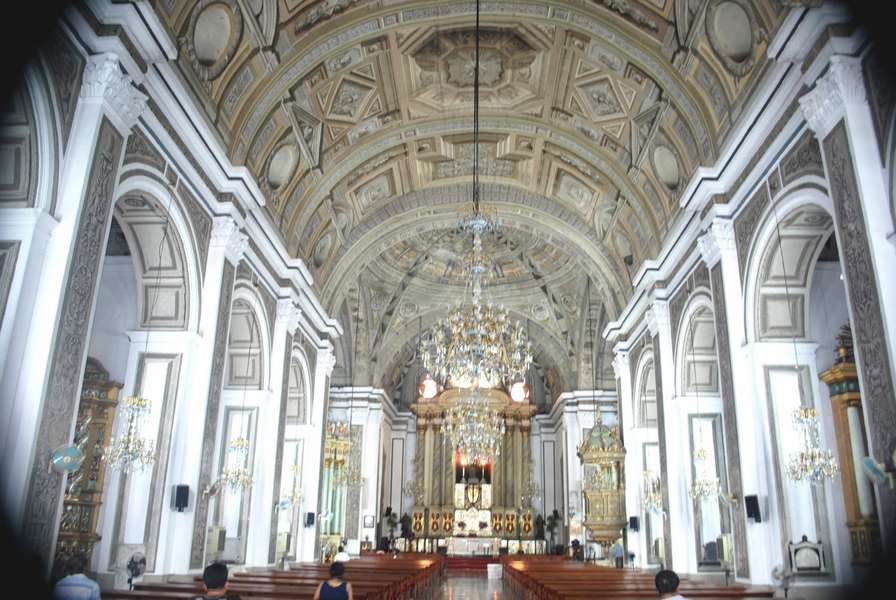 The church’s architecture is a work of marvel, and was inspired by the temples that the Augustinians built in New Spain. The structure which currently stands was erected at the end of the 16th century in 1587 and would see completion 17 years onwards in 1604. The entire church bears symmetrical patterns and makes it a work of meticulous precision, which attracts scores of people on a daily basis. San Agustin Museum is definitely a highlight within the historic walled city of Intramuros and a site worth visiting when travelling in the vicinities.
The church’s architecture is a work of marvel, and was inspired by the temples that the Augustinians built in New Spain. The structure which currently stands was erected at the end of the 16th century in 1587 and would see completion 17 years onwards in 1604. The entire church bears symmetrical patterns and makes it a work of meticulous precision, which attracts scores of people on a daily basis. San Agustin Museum is definitely a highlight within the historic walled city of Intramuros and a site worth visiting when travelling in the vicinities.
Another one of the most attractive sites within the Intramuros is Fort Santiago. Fort Santiago is a citadel within the walled ancient city which was built by the Spaniard Miguel López de Legazpi. López de Legazpi was a conquistador in charge of the Spanish empire’s assets in the East Indies and so vast was his influence that the capital of the Philippine state of Albay, is named after the conqueror. As one of the more important structures within the historical confines of Intramuros, Fort Santiago was notorious for containing prisons out of which some prisoners never made it out, especially during the period of Spanish colonial rule and subsequently during the advent of World War Two.
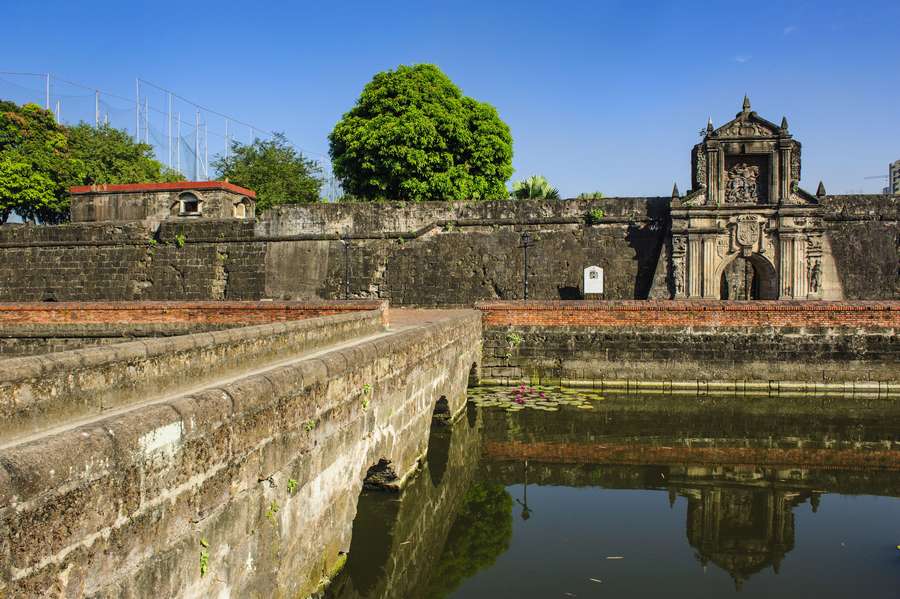 Its notoriety was surpassed when one of the heroes of the Philippine struggle under the rule of Spain was imprisoned at the site before his execution. Charged with rebellion, sedition and conspiracy, José Protasio Rizal Mercado y Alonso Realonda, better known as José Rizal, would write one of his last poems – Mi Último Adiós, or My Last Farewell – in a prison inside Fort Santiago and hide it in a stove, which would later be given to his family. He is the first Philippine activist believed to have been killed solely for his writings.
Its notoriety was surpassed when one of the heroes of the Philippine struggle under the rule of Spain was imprisoned at the site before his execution. Charged with rebellion, sedition and conspiracy, José Protasio Rizal Mercado y Alonso Realonda, better known as José Rizal, would write one of his last poems – Mi Último Adiós, or My Last Farewell – in a prison inside Fort Santiago and hide it in a stove, which would later be given to his family. He is the first Philippine activist believed to have been killed solely for his writings.
Fort Santiago has a perimeter of about 620 metres and curiously has three prominent sides that make it resemble a near triangle. The triangles jumped to British rule in the 18th century before seeing the American flag raised from its bastion. It took heavy damage during World War Two under Japanese occupation and was the scene of at least 600 American deaths.
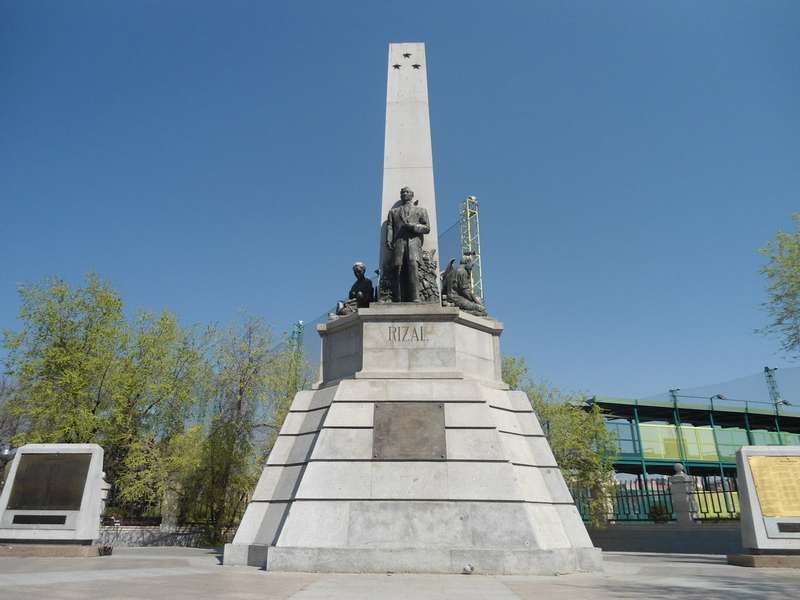 Today the notorious prisons and the bastions within the fort can all be visited along with a memorial statue of José Rizal. The beauty of the entire area makes of the place an ideal spot in which to have a picnic or a walk, as one gazes at the historic sites and beauty of the structures.
Today the notorious prisons and the bastions within the fort can all be visited along with a memorial statue of José Rizal. The beauty of the entire area makes of the place an ideal spot in which to have a picnic or a walk, as one gazes at the historic sites and beauty of the structures.
 If you feel like you need to do something by car however, we recommend you take a ride on the Jeepney. A trademark mode of transportation of the island, the Jeepney is a combination between a Jeep and a jitney. They were formerly made with leftover American Jeeps from the United States Army, who dispensed of them after their military presence in the area during the Second World War. Jeepneys have today become an iconic way to travel Manila, with some boasting of serious swag levels as they’re adorned with fiery contrasting colours and kitschy accessories. Think of them as song taews on LSD – or what they would resemble in Alice in Wonderland. They have however been regulated across the years, with the government imposing an age limit on Jeepneys which are older than 15 years of age.
If you feel like you need to do something by car however, we recommend you take a ride on the Jeepney. A trademark mode of transportation of the island, the Jeepney is a combination between a Jeep and a jitney. They were formerly made with leftover American Jeeps from the United States Army, who dispensed of them after their military presence in the area during the Second World War. Jeepneys have today become an iconic way to travel Manila, with some boasting of serious swag levels as they’re adorned with fiery contrasting colours and kitschy accessories. Think of them as song taews on LSD – or what they would resemble in Alice in Wonderland. They have however been regulated across the years, with the government imposing an age limit on Jeepneys which are older than 15 years of age.
Manila is truly one of the world’s most enchanting capitals one can visit, and certainly among the most charming in South East Asia. If you’re a historical freak, the best place for you is the lovely ancient fortressed city of Intramuros. If you appreciate architectonic elegance head over to the San Agustin Church museum, where a legacy of beauty will couple the elegant design of the structure. If not, head over to the Fort Santiago and bask in scenic views it has to offer. But don’t forget to get on the Jeepney earlier or later. Whatever you may end up doing, Manila is truly a city worth visiting while on vacation.


